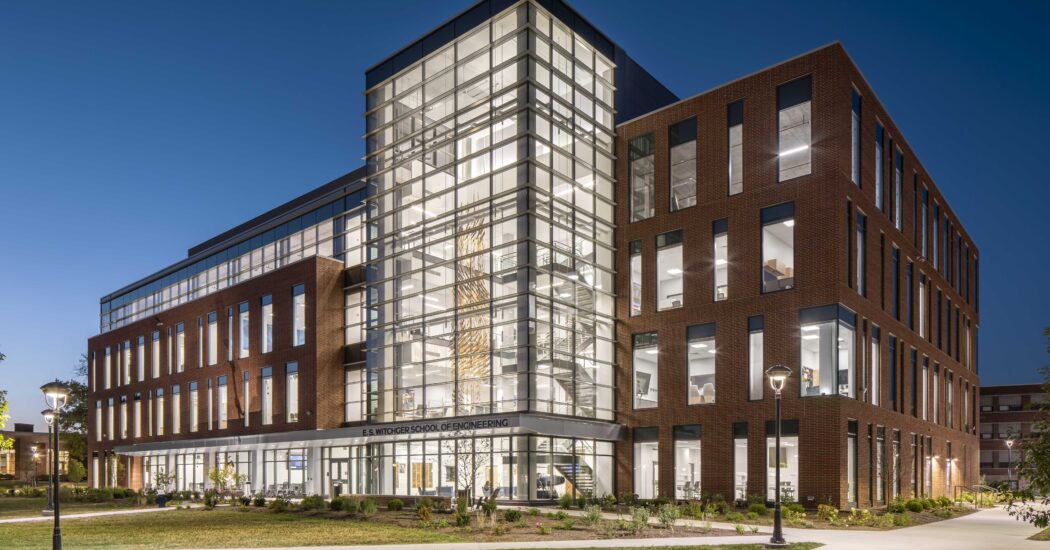I’m Considering Your Offer
-
Category
Studio-Higher Ed -
Posted By
Sarah Hempstead -
Posted On
Oct 04, 2016
40 years ago, most undergraduates were delighted to gain acceptance to their college of choice. The “honor gradient” ran from the institution, at the notional “top”, down to the individual undergraduate, very much at the “bottom”. Today, the situation could not be more different with fierce competition for prospective students. With roles reversed, and the other party now on the “college catwalk”, what contribution can the built environment make to ensuring your institution remains top dog?
As designers with an extensive practice in the higher education sector, we believe it is important for us to understand something of the influences and the pressures that operate on our clients at a strategic level within the university and college communities. It is easy from our perspective, and we also happen to believe it passionately, that the campus built environment truly matters as a success factor for both attracting and retaining students. But it is only right that we should keep ourselves informed about the issues that really influence today’s higher education scene. So we did a little research.
What we found out strengthens our own conviction that the built environment matters a lot on campus. But it also opened up a rather different perspective. First, in the interests of balance, we do need to acknowledge that architectural aesthetics are very far from the only issue swaying student choices. The student’s home state remains a crucial factor. One survey carried out by the National Association for College Admission Counselling showed that 72% percent of students attend college in their home state, with just 16% percent enrolling beyond either their home or a bordering state. Recent (2013) findings from the Higher Education Research Institute affirm that some 48% percent of college students identify “financial aid” as a “very important” factor when they are choosing an institution. This importance had increased from 33% percent back in 2004.
The role and influence of financial considerations is neither surprising nor a one-of finding. The respected Noel Levitz Student Satisfaction Inventory, for Fall 2011 at colleges and universities nationwide, found that financial aid was the dominant reason to enroll for some 82% of first-year students, followed closely by cost of the education on offer, at 81% percent of students surveyed. So does it really all come down just to money and home state? We believe it does not. (And even if it did, one of our arguments remains that the built environment still has a major if somewhat different role to play.)
But for now, it’s back to those selection factors. The Noel Levitz Inventory includes several that are not directly related to fees and financial support. Two of them excite our particular interest and they are: geographic setting and campus appearance. The Inventory uses the following definitions:
- Geographic setting: Addresses campus location as a factor because of distance from home as well as the setting of the school (urban, rural, etc.).
- Campus appearance: Considers how the campus looks to the student and may also reflect perceptions of campus maintenance.
Some 62% percent of students cite the geographic setting as a key influencing factor. That may arguably be an extension of the “home state factor” explored above. But campus appearance and its associated issues affect 63% of students when they make their choice of college. So it does matter. Of course, there is nothing counter intuitive about the proposition that an attractive or impressive campus is going to exert a positive influence. It certainly is interesting from our perspective however to see just how directly the quality of built environment is tied to student choice.
There is however a strategic debate to be had that sits apart from the aesthetics. In the face of the data, many higher education strategists might be tempted to forsake the built environment in favor of maximizing financial support and minimizing fees. This, their logic might run, would play more strongly to the predominantly home and adjacent state student crowd, positioning them competitively against local and regional rivals. The logic may well be sound, but it does not automatically demand they relegate the built estate.
In reality, campus buildings have a significant role to play, not simply in looking good on the day when a prospective student visits college, but on making the education they offer more financially affordable too. Now, that may seem counter-intuitive. How can visibly high-quality buildings and an impressive environment translate into lower fees and higher levels of student financial support? The answer lies in the ability of architects and engineers to create high-performance as well as high-impact buildings.
“Smart” renovation, maintenance, and construction projects are not just making a marginal impact on daily campus running costs. The energy and materials savings they enable are stripping billions of dollars out of institutional running costs, as well as attracting “green” investment and endowment. Costing less to keep the lights on contributes directly to keeping the doors open to those many students for whom financial considerations matter. At the same time, building a sustainable campus means growing a positive profile as well as making monetary sense.
Strategically enlightened leadership in higher education is embracing the fact that, going forward, being competitive means a college education “at the right price” – to the student, to the institution, and to the environment. The campus built environment has a major role to play in making right price education a reality.





